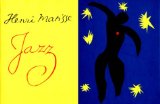Exactitude is not truth: Photography
August 19, 2010
 I am a very lucky art nerd. Last Christmas, I had asked for a couple of books about painting, particular artists, and theories of art. I have not read Theories of Modern Art in its entirety, but it has been a staple in my reading diet since I opened it. The arrangement of all these excerpts and essays is phenomenal! I pick it up and read at least a tiny bit every chance I get.
I am a very lucky art nerd. Last Christmas, I had asked for a couple of books about painting, particular artists, and theories of art. I have not read Theories of Modern Art in its entirety, but it has been a staple in my reading diet since I opened it. The arrangement of all these excerpts and essays is phenomenal! I pick it up and read at least a tiny bit every chance I get.
One night I was tossing and turning in bed and finally decided to switch the light on and read some Theories of Modern Art. I opened up to an excerpt by Henri Matisse, “Exactitude is Not Truth.” Wow, soak that in for a minute; I know I had to.
This simple sentence brought me a tiny piece of enlightenment. I was beginning to understand the trickery of art; the art of art, if you will. Matisse is one of my personal favorite painters, but the concept of exactitude not being truth brought me to a different art form–photography.
Photography is a newer form of art (compared to drawing and painting for example). It was discovered in the mid-nineteenth century, and was not always given the credit it deserved in the art world. Why? Well, because photography captures a moment just how it is. There is no real skill involved. Right?
 My question became, “Do camera’s tell the truth?” My answer is, “No.” The camera is similar to a paintbrush; it must be controlled by someone or something. The person behind the camera tells us the truth. When I look at a photograph, my mind accepts that what I am seeing is something that exists or someone who exists or did exist. Why do I accept that? That is what the person behind the camera showed me. Why do I (seemingly) blindly follow the artist? I am trusting that there is a reason for the artist to be showing me this image. If it is not telling the truth, why bother showing it?
My question became, “Do camera’s tell the truth?” My answer is, “No.” The camera is similar to a paintbrush; it must be controlled by someone or something. The person behind the camera tells us the truth. When I look at a photograph, my mind accepts that what I am seeing is something that exists or someone who exists or did exist. Why do I accept that? That is what the person behind the camera showed me. Why do I (seemingly) blindly follow the artist? I am trusting that there is a reason for the artist to be showing me this image. If it is not telling the truth, why bother showing it?
When an artist creates something, it is meant to be seen by a viewer, an audience. The artist uses every trick she can to make you look. She is trying to lure you in. She wants you to believe in her creation. She was in that world when that painting was done or that photograph was taken. It is the movement of her hands that interprets what her eyes told her mind. She is trying to convince you that what she saw was or is true and important.
 After I got past the first sentence, I began to understand further the ideas and processes that supported it to begin with. Artists do not always abide by the rules. They say, “Why can’t my lack of exact copying be the determining factor in the judging of my skill? Why is it soley based on what is exactly in front of me (and therefore it is shown to the viewer)?” It pushed the limits that the art world accepted as boundaries. Photography still rides that line. (Photography is becoming a major aspect in Digital Media, especially as film is phased out.) It is beyond the absurd idea of using primitive methods to tell the truths of a society. It is so bonkers that it actually works.
After I got past the first sentence, I began to understand further the ideas and processes that supported it to begin with. Artists do not always abide by the rules. They say, “Why can’t my lack of exact copying be the determining factor in the judging of my skill? Why is it soley based on what is exactly in front of me (and therefore it is shown to the viewer)?” It pushed the limits that the art world accepted as boundaries. Photography still rides that line. (Photography is becoming a major aspect in Digital Media, especially as film is phased out.) It is beyond the absurd idea of using primitive methods to tell the truths of a society. It is so bonkers that it actually works.
Portraiture, landscape, and still life are traditional subjects in the fine arts. Sculpture, painting, and drawing all utilize these subjects as modes of communication. But, composing an image using a pencil is completely different than using oil paints. It is about the tool(s) you are using– pencil, clay, paint, or a camera–and how far you are willing to push the inclusion or exclusion of certain standard processes. Pencils depend upon erasers, different densities of graphite, expressive markings, and paper to draft on.  Clay requires tools to model, different glazes, a kiln to cook it in, and space to be displayed. Paint demands medium to adhere to a surface, pigments to create different colors, and a surface that supports the painting style of the artist. Cameras need light sensitive film to create an exposure, a mechanism for measuring the amount of light needed, and an opening to allow or block the light. That is just the beginning of the list. An artist practices using any number of these mediums, along with the many others that are available. Cameras do not simply tell the truth because of their ability to capture something in a seemingly exact way. There is work behind every artistic image.
Clay requires tools to model, different glazes, a kiln to cook it in, and space to be displayed. Paint demands medium to adhere to a surface, pigments to create different colors, and a surface that supports the painting style of the artist. Cameras need light sensitive film to create an exposure, a mechanism for measuring the amount of light needed, and an opening to allow or block the light. That is just the beginning of the list. An artist practices using any number of these mediums, along with the many others that are available. Cameras do not simply tell the truth because of their ability to capture something in a seemingly exact way. There is work behind every artistic image.
An artist sets up a stage or chooses a particular location for a reason. There is something that attracts her to a particular person, place, thing, and/or idea. An artistic photographer is trying to say something beyond what is being shown. She must have a message and use symbols to effectively communicate that message. There is a conceptual skill level needed to create a successful visual image that is connected to a particular thought structure. There needs to be a balance in an artist’s images. Photography is a worthy addition to the world of art, and if Matisse was alive today I hope he would take the opportunity to use a camera and experience the design abilities it has.
-Megan
